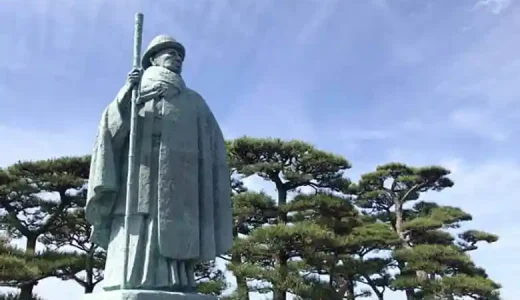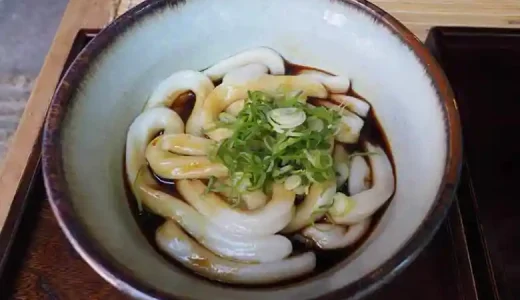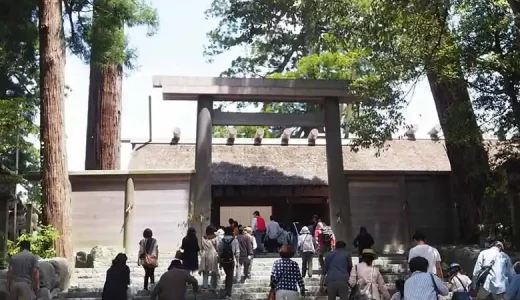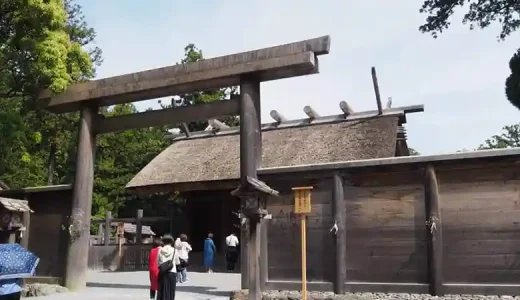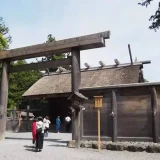I visited Ise Grand Shrine in Ise City, Mie Prefecture, Japan. This shrine is considered one of the most sacred places in Japan. It consists of two main parts: Geku, which is dedicated to Toyouke-no-Omikami, the goddess of agriculture, industry, and prosperity, and Naiku, which is devoted to Amaterasu-Omikami, the sun goddess and the ancestral deity of the Japanese imperial family.
Many Japanese visit Ise Grand Shrine to pray and thank the gods. It is also an important cultural and historical site and attracts many tourists worldwide.
Naiku – the inner shrine
The history of Naiku dates back to ancient times. It is believed that the shrine was founded over 2,000 years ago and has been a site of religious significance for the Japanese people ever since.
the manners of worship at Naiku
I want to introduce the manners for Worship at Naiku of Ise Grand Shrine.
Worship Geku first.
When visiting the Ise Grand Shrine, it is traditional to see the Geku first and then Naiku.
Visit both Geku and Naiku.
Visiting only one of the two shrines, the Geku or Naiku, is considered unlucky and is not recommended. Instead, visiting both shrines is essential to receive the full benefits of the pilgrimage.
Give thanks to God.
Wishing for personal gain or monetary offerings is not considered appropriate at the Shogu.
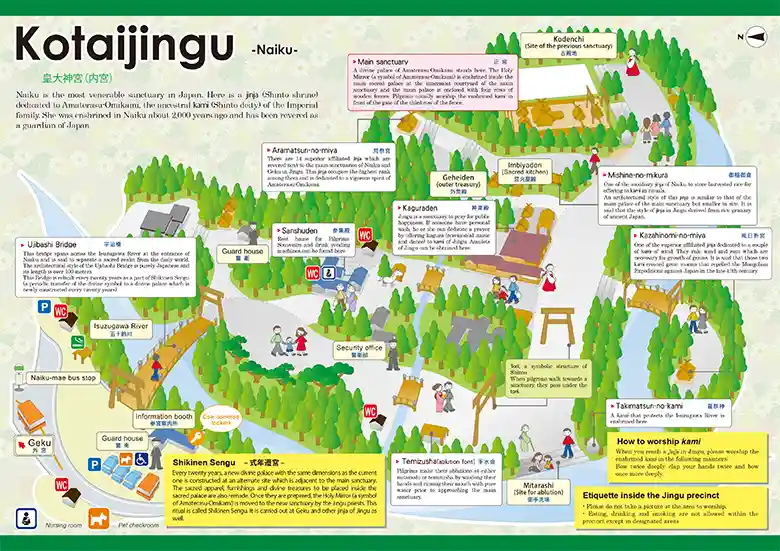
To get from Geku to Naiku at Ise Grand Shrine, you can take a bus or taxi from the Geku bus stop. The bus ride takes about 20 minutes. Alternatively, you can walk from Geku to Naiku, which takes about an hour. The route is well-marked and passes through the forest, offering a peaceful and scenic walk.
the Ujibashi Bridge
A giant Torii gate stands at the entrance of the Ujibashi Bridge. Japanese people call this bridge a bridge connecting people and God. From here onward, it is the domain of the gods.
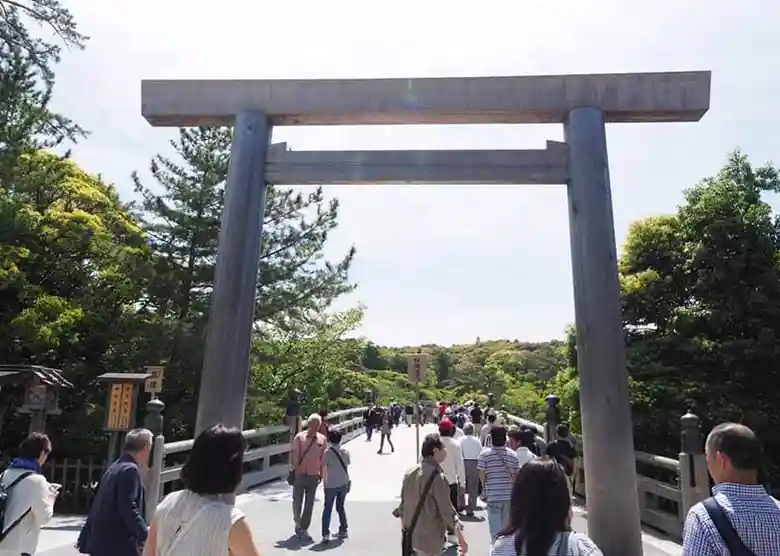
The center of the path is for the gods, so worshippers walk along the edge of the course. At Geku, visitors walk on the left side of the way, and at Naiku, visitors walk on the right.
During Shikinen Sengu, the Torii gates are also rebuilt. The materials for the bridges are munamochi-bashira from the dismantled main shrines of Naiku and Geku. The shrine site uses the munamochi-bashira of Naiku, and the entrance side uses those of Geku. Munamochi-bashira is a post that directly supports the ridge.
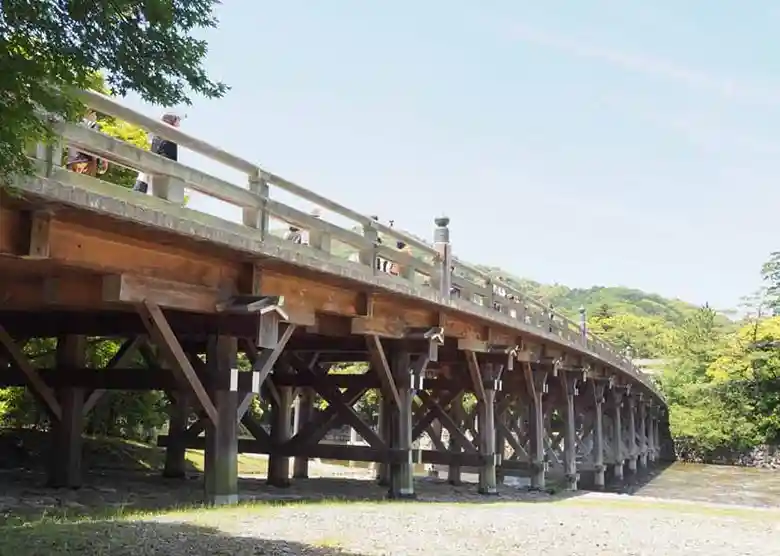
The photo above is the Ujibashi Bridge seen from the riverbank on the Naiku side of the Isuzu River. The bridge is wooden, 101.8 m long, and 8.42 m wide.
the Isuzu River
The Isuzu River flowing through Naiku has pure water, and it is said that Yamatohime no Mikoto, a goddess in Japanese mythology, purified her clothes in this clear stream.
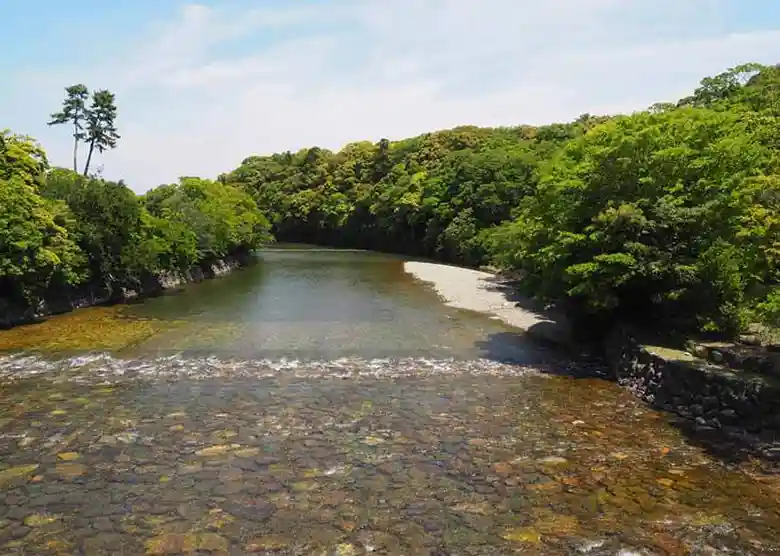
According to legend, Yamatohime no Mikoto was tasked by her father to find a suitable place to build a new capital for the gods. She searched the land and eventually came across the area now known as Ise, where she found a beautiful and peaceful spot by the Isuzu River. She built a palace there and became the first ruler of Ise.
Temizusha
Temizu is a ritual to purify oneself by washing hands and rinsing the mouth with clean water before entering the main shrine. The Temizusha is a place containing a pool of water for use in ritual purification.
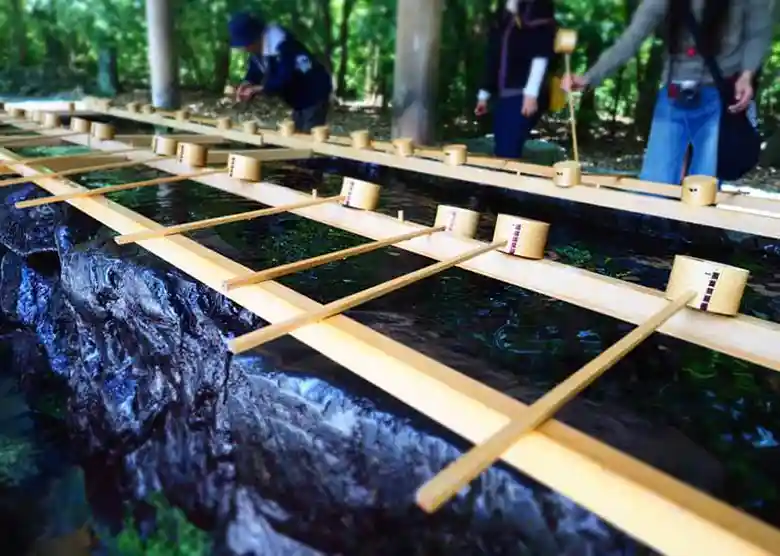
Worshippers use a dipper to scoop water from the Temizusha and purify their hands and mouths with the water.
How to purify your hands and mouth
- Hold the dipper in your right hand and fill it with water to cleanse your left hand.
- Switch the dipper to your left hand and wash your right hand.
- Hold the dipper with the right hand again, pour the water with the left hand, and rinse the mouth.
- Cleanse the left hand again.
- Wash the dipper’s handle with the remaining water and return it to its original position.
First Torii gate
After purifying yourself at Temizusha, proceed, and you will see the First Torii gate. This Torii gate is made of wood, 7.5 meters high, and the circumference of the pillar is 75 centimeters.
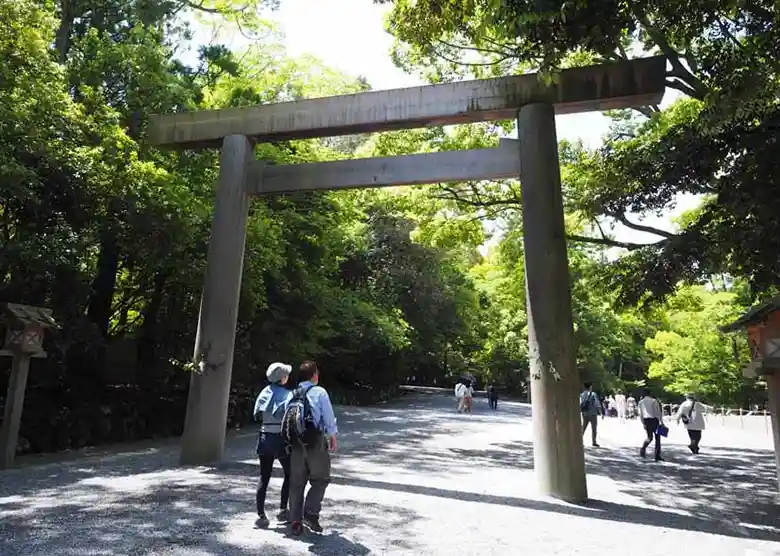
Before passing through the Torii gate, please be sure to stop and bow in respect to God. We begin a dialogue with God in our hearts when we pass through the Torii gate. Once you have finished praying, turn around and bow toward the shrine as you exit the Torii gate.
Mitarashi(the site for ablution)
As you pass through the Torii gate and continue along the approach, you will notice the Isuzu River flowing on your right. As you descend the gentle slope, you will find Mitarashi (the site for ablution), a stone-paved area on the bank of the Isuzu River.
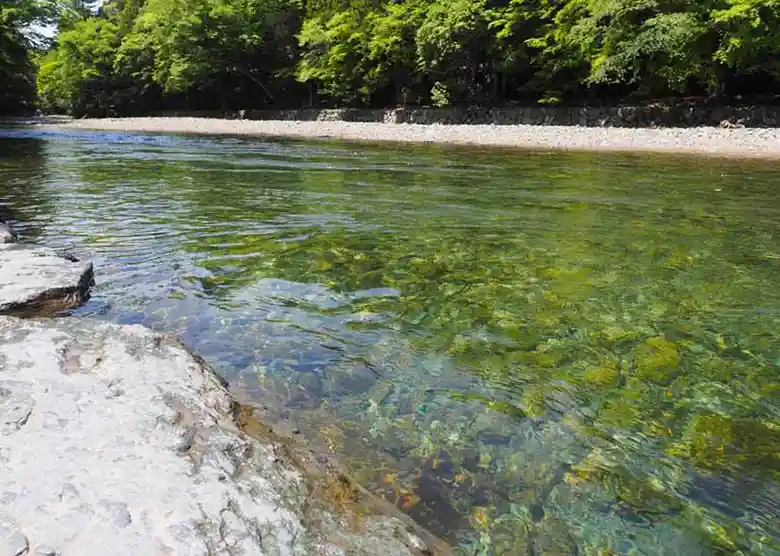
The water flowing through the Isuzu River is pure, so you can purify yourself here as well as at Temizusha.
Kotai Jingu(Shogu)
The official name of the main shrine at Naiku is Kotaijingu(Shogu). This shrine enshrines Amaterasu-Omikami, the ancestral deity of the Imperial Family and the Sun Goddess.
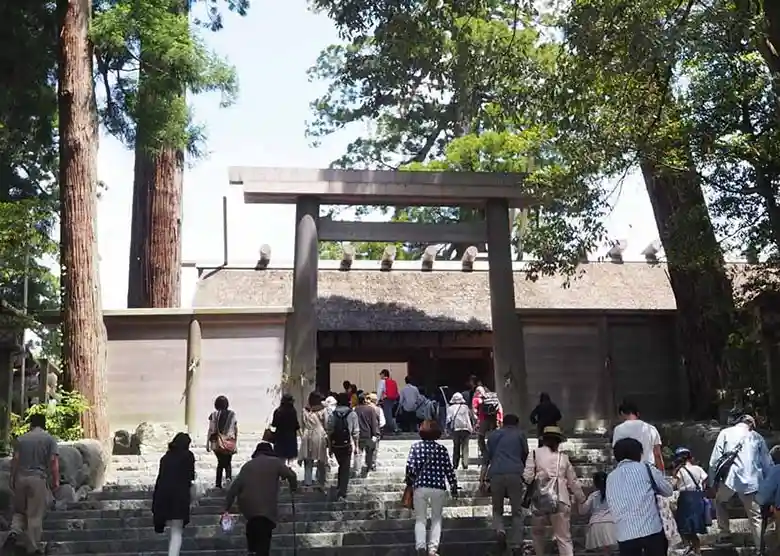
The shrine is built on a raised platform above the stone steps and surrounded by a four-layered wooden fence, so it is impossible to see the shrine directly. Photography is only allowed up to the bottom of the stone steps.
Mishine-no-mikura
The deity at this shrine is known as Mishine-no-mikura no kami.
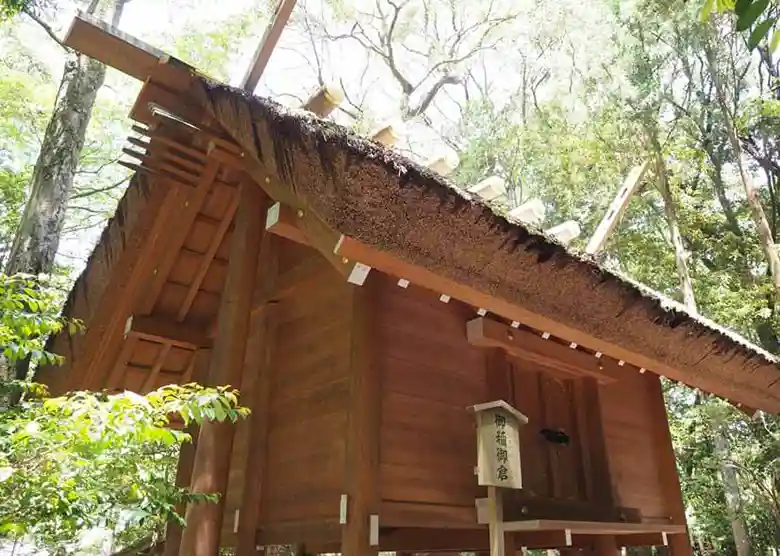
This shrine serves as the granary for Naiku, and the rice harvested from the “rice paddy of God” is stored here and offered to Amaterasu-Omikami at the Naiku ceremony.
Aramatsuri-no-miya
Aramatsuri-no-miya is the second most crucial shrine belonging to Naiku, after Shogu. Its shrine pavilion measures 6.42 m wide, 4.24 m deep, and 4.48 m high, second only to the Shogu.
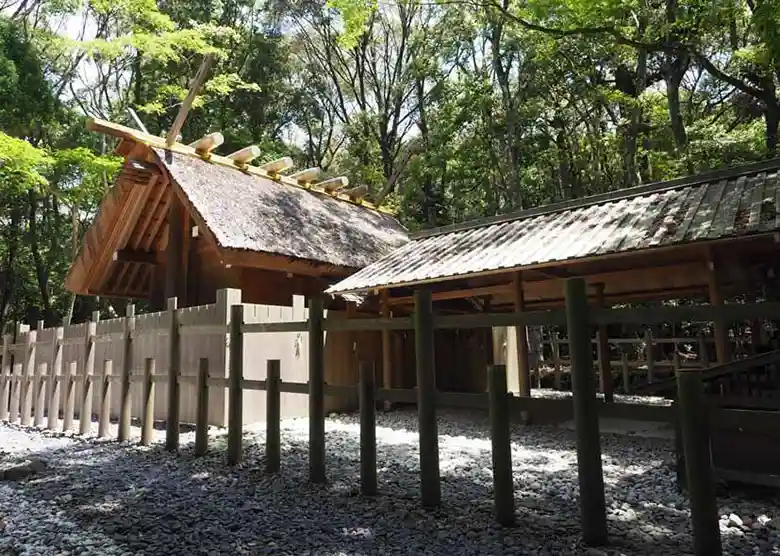
The shrine’s deity is Aramitama, a wild and violent form of Amaterasu-Omikami that appears during the war and natural disasters.
Kazehi-no-Mikoto Shrine
Kazahinomi-no-miya is the shrine that enshrines Shinatsuhiko no mikoto and Shinatobe no mikoto.
Kazahinomi no miya Bridge
This wooden bridge is 45.6 m long and 4.6 m wide, spanning the Shimaji River, a tributary of the Isuzu River. The Kazahinomi-no-miya is located on the other side of the bridge.
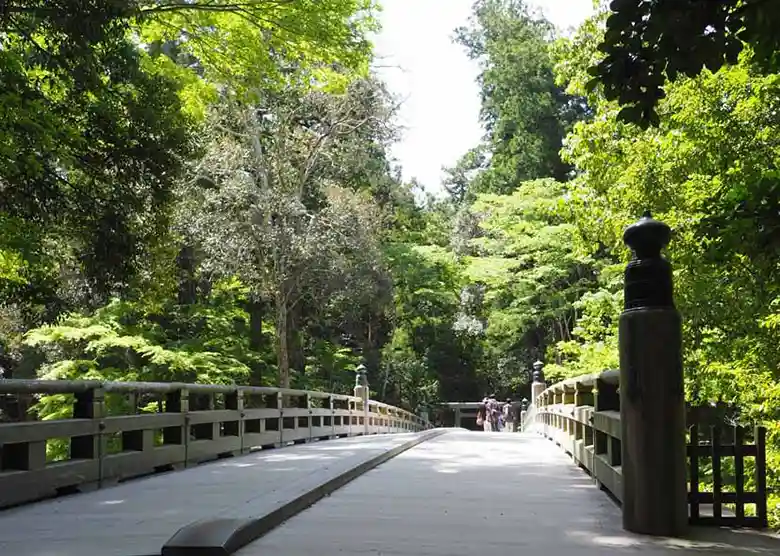
The area where the bridge spans are famous for its fresh greenery and autumn foliage.
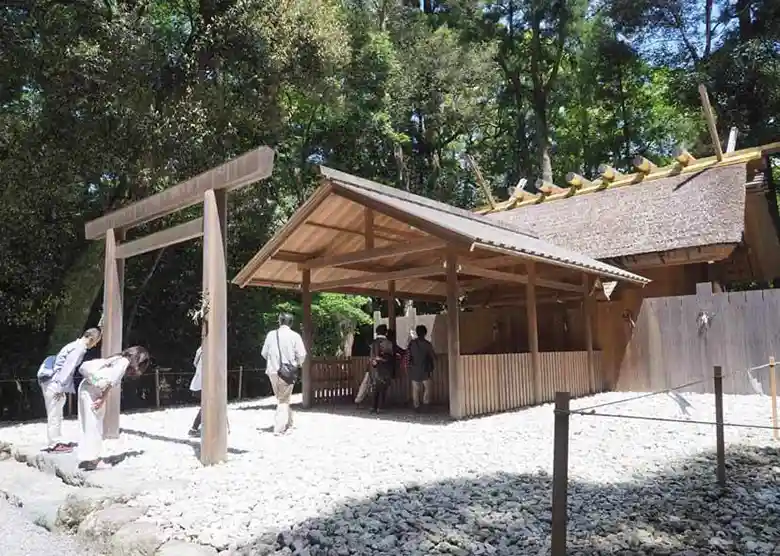
At Kazahinomi-no-miya, a festival is held annually on May 14 and August 4 to pray for mild weather and a good harvest.
It took us around 90 minutes to visit the many shrines in Naiku. The shrine pavilions and approaches were surrounded by towering trees, creating a sense of unity with nature. In the quiet, with only the sound of our footsteps on the cobblestones, I could fully immerse myself in nature and connect with God. If you ever have the chance to visit Japan, I recommend visiting the Ise Grand Shrine in Mie Prefecture. It is an extraordinary place where you can reflect on your spiritual beliefs.
